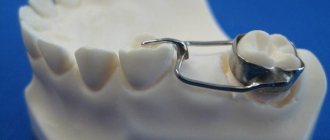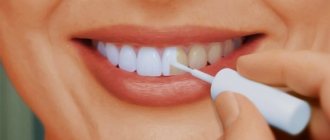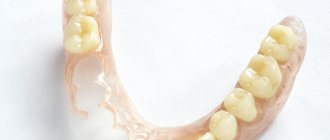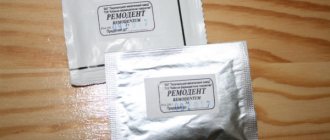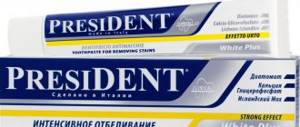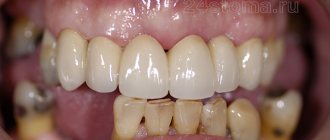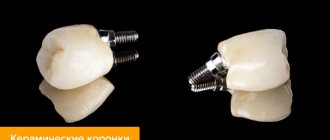26.11.2019
The choice of dentures is now quite large, but in case of incomplete tooth destruction, the most popular are dental crowns, which allow you to avoid removal. They are made in different ways, from different materials, and sometimes it can be difficult to choose the right option.
What is a crown and what is it for?
A crown is a permanent dental prosthesis, which, due to its shape, is difficult to distinguish from a real tooth.
Crowns are used when the tooth root is preserved and it is necessary to restore the functionality of the tooth, as well as the attractive appearance of the dentition, while preventing subsequent destruction of the dental organ.
The material used to make crowns varies. Depending on it, these prostheses are divided into: metal, plastic, ceramic and metal-ceramic. Metal products are used extremely rarely, especially for visible teeth in the smile area. After all, they look completely unattractive.
Crowns made of ceramics or zirconium are the most expensive, because they look as close as possible to natural teeth, and even in the smile area they look very attractive.
Plastic products most often play the role of a temporary prosthesis. After all, they can crack or break and will not last long. Their cost is the lowest.
Metal-ceramic crowns are durable and aesthetic. Their practicality makes this type the most sought after and popular.
In addition to the material used to make crowns, the criterion for dividing them into types is the manufacturing method. Thus, crowns can be either solid or stamped.
Advantages and disadvantages
When choosing the type of crown, it is necessary to compare the existing positive qualities, properties of the material and its disadvantages.
This will relieve discomfort and disappointment in the process of wearing an orthopedic design:
| Characteristics of a stamped metal crown | |
| pros | Minuses |
| Simple technology for making a crown. | Over time, the cement on which the structure sits deteriorates. This leads to the formation of gaps between the dentin and the prosthesis. |
| Possibility of using the structure without preliminary depulping. | The layer of stamped metal is insignificant, so while the crown is worn, its surfaces wear out. |
| The duration of the treatment process does not take much time. | This type of prosthetics does not restore the functionality of the tooth due to the inability to recreate the anatomical shape of a molar or incisor. |
| Low installation requirements, which allows the use of a stamped design even in cases where another type of prosthetics is contraindicated for a number of reasons. | Dentures made of stamped metal do not provide a tight fit to soft tissues, which provokes the penetration of food particles under the structure, where a favorable environment for caries and other diseases develops. |
| During the process of prosthetics, dental tissue is ground, but a minimal layer is removed (0.3 mm). | The aesthetic side of metal products leaves much to be desired. Such a jaw is unlikely to decorate a smile. |
| The use of a stamped metal product is the most affordable type of prosthetics. | |
There are plenty of pros and cons of a stamped prosthesis, but during the analysis it becomes clear that this type, due to its accessibility and simplicity of manufacturing technology, has the right to exist.
Solid crowns
Thanks to modern technology, dentists can produce very high-quality crowns through casting.
A solid prosthesis is used to restore and preserve a partially destroyed tooth, and can also serve as a support for a removable or bridge prosthesis.
For casting, an alloy of cobalt and chromium is used, so a prosthesis without adhesions appears. You can cast a long structure in the form of a bridge; there is also no need to solder it.
Options for manufacturing solid crowns:
- A regular prosthesis made of metal, which is simply polished without spraying other substances.
- Product with gold plating. With prolonged use, the coating can wear off and the prosthesis can cause an allergic reaction.
- Plastic crowns consist of a cast metal frame and a plastic lining, which makes the artificial tooth more aesthetically pleasing. The plastic may break off if used for a long time and carelessly.
- Metal-ceramic products. Durable, natural, and, as a result, quite expensive.
Cast crowns are recommended for use in the following cases:
- when teeth are severely damaged;
- in case of pathology of the shape or location of the dental organ;
- with malocclusion;
- with anomalies in tooth size;
- as a support for bridges and removable dentures;
- for the prevention of tooth abrasion, bruxism.
What alloys are they made of?
The list of materials that are suitable for the manufacture of such structures includes:
- alloy of chromium and cobalt
- chromium-nickel alloy
- high titanium alloys
- alloys containing precious metals (precious alloys)
Interesting fact! Titanium is resistant to aggressive factors, does not darken and does not provoke the development of allergic reactions, therefore it is often included in alloys for the manufacture of cast dentures. And alloys containing gold in their composition are characterized by ductility, which ensures an accurate fit to the gum.
Solid crowns are also divided into the following types:
- metal coated
- metal without coating
- metal with ceramic lining
- combined bridges
Indications and contraindications for the use of stamped crowns
Stamped crowns resemble caps. They have thin walls, which eliminates the need for preparation. The denture is placed on the tooth.
Stamped crowns are used in the following cases:
- if there is a defect in the crown of the tooth that needs to be restored;
- in order to protect a healthy tooth, before putting on a clasp denture;
- protect the supporting teeth on which the bridge will be installed;
- for milk crops that have undergone destruction.
Contraindications for the use of these types of crowns are: severe abrasion or complete destruction of the tooth, bruxism.
Pros and cons of crowns
Disadvantages of products:
- over time, the cement that holds the crown in place may dissolve;
- the design does not always fit tightly, causing pieces of food to get in, which can cause caries;
- the crown wears out during long-term use;
- Lost functions are not fully restored.
Pros:
- You need to grind your teeth very little;
- can be used in places that are difficult to reach for other types of prosthetics;
- install the structure on a living tooth;
- low price.
Peculiarities
Indications for the use of stamped products are almost the same as for other prostheses:
- severe tooth decay when a filling will no longer help;
- as a support for a bridge;
- in order to protect a baby tooth that has begun to decay;
- to protect the tooth, which is intended for attaching a clasp denture.
Bruxism and pathological abrasion of the enamel are the main contraindications for the installation of such prostheses.
The advantages of such designs are the following: there is almost no need to grind the tooth; you can install them on the tooth without removing the nerve; used in cases where other prostheses are contraindicated; low price.
Disadvantages of stamped crowns:
- a bridge attached to such a structure may fly off as a result of gradual resorption of the adhesive cement;
- a loose fit allows food debris to clog into the hole, causing inflammation and caries;
- chewing function is not restored 100%;
- We wear out the material soon enough;
- the need to remove a prosthesis in order to cure a tooth or gum that has suffered due to the shortcomings of such a crown.
Does the patient feel pain during treatment?
Tooth grinding takes place under anesthesia, so there is no pain. But when the anesthesia stops working, pain may be felt both in the tooth and in the gum.
Causes of pain:
- when too much cover is removed;
- when the gums are pulled back (a special thread is used), the tooth may hurt for a couple of days;
- If pain is detected some time after the treatment procedure, an inflammatory process may begin in the tooth.
Manufacturing stages
When making stamped crowns, it is important to follow the following rules:
- The crown should fit very tightly around the neck of the tooth after it is installed. If the product is wider, an irritant reaction is possible, as well as pushing back of the gums, which will provoke its atrophy. There will be a gap in any case; when fixed, it is filled with cement, which gradually resolves and forms a gap. The smaller the fit of the crown, the more cement is used, which means the larger the gap will be after it is absorbed.
- It is necessary to immerse the structure into the groove no more than 0.3 millimeters, otherwise marginal periodontitis in the most acute form, as well as permanent intoxication, is possible.
- It is important to restore not only the chewing surface, but also its functionality.
- It is necessary to take into account the anatomical structure of the jaw, observing all the tubercles and depressions to ensure the correct relationship to the opposite parts of the jaw.
- When two jaws come into contact, the interalveolar height should not be exceeded, which could lead to injury.
Before installing a crown, the doctor consults the patient, makes preparations, makes a prosthesis and adjusts it if necessary.
Let's look at the manufacturing stages:
- Taking an impression of the entire jaw.
- Crown modeling.
- Receiving stamps.
- Making a crown.
- Grinding, polishing.
Kinds
There are several types of metal structures:
- Dentures are installed in the presence of a destroyed tooth fragment, when it is not possible to install a filling or inlay
Stamped - made on the basis of caps (sleeves) with subsequent giving the workpiece the anatomical shape of the patient’s tooth;
- Cast - the manufacturing process includes casting molten metal into a prepared mold, this makes it possible to obtain precise parameters of the prosthesis and a high-strength product;
- Brazed - the manufacturing technology resembles a stamped one, but the sleeve is first cut into 2-3 parts, after tapping it is joined together by soldering (this method is used in cases where it is not possible to give an anatomical shape to the whole sleeve).
Dentists against stamped products
Despite the fact that stamped crowns have been used for quite a long time, many modern dentists are against their use due to a large number of shortcomings and imperfections, and prefer more modern types of products.
The result of unsuccessful installation of a stamped product may be the following:
- gradual dissolution of cement due to incomplete adhesion;
- Pieces of food that rot accumulate near the stump;
- caries affects the enamel, and then dentin, sometimes even their complete dissolution;
- The tooth is destroyed and can no longer be restored; it has to be removed.
In addition, the monotonous production of stamped crowns resists the necessary repetition of all the cusps on the tooth surface. A sleeve is taken, which is then shaped by tapping with a special hammer.
How does turning happen?
At the very beginning of the procedure, the patient is given anesthesia. If work with vital teeth is meant, anesthesia is not used, except in cases where it is necessary to move the gums back using a special thread.
It is best to take an x-ray before the procedure. With its help, the dentist will see all the structural features of the dental organs and possible deviations.
It is also important to take into account the anatomical features of the patient’s teeth and the response of soft tissues to the preparation procedure.
Preparation
To prepare a tooth for a stamped product, it is enough to remove only a thin layer of the tooth surface.
Let's consider the stages of preparation:
- At the beginning of the procedure, diamond or carborundum wheels are used to prepare a surface with a thickness of 0.28 to 0.5 millimeters. The thickness depends on the material used and whether spraying will be necessary. When using gold or silver with palladium, more tissue needs to be removed, since to increase the life of the prosthesis, solder is poured onto the back of the teeth (especially on the molars and the cutting edges of the front teeth).
- A soft strip of wax is used for biting; its imprints are used to determine the picture of sufficient or insufficient space between the tooth and the product.
- Next, the proximal surfaces are prepared using shaped heads and diamond discs.
- At the final stage, the palatal and buccal sides of the crown are prepared. It is important that the diameter of the neck does not differ from the diameter of the stump. This way the product will fit tightly, going into the gum pocket without obstructions. With different diameters, the product either will not fit or will hang out.
Service life of restorations
The service life of a filling is on average 3-5 years - the same amount of time that restorations created using Strip Crown last. But, of course, subject to all care rules and recommendations of the pediatric dentist. To exclude complications - chips and secondary caries under the filling, you need to visit a doctor at least once every 3-6 months.
“My son’s upper incisor was not filled very well at the children’s clinic. A day later, the filling fell out, but a large hole remained. I was embarrassed to go to kindergarten looking so “handsome”. Let's go to the private office. There the doctor suggested making a tooth using a soft transparent crown. And it turned out really great, you can’t tell it from the real thing at all!” Margarita, review from baby.ru
Materials used
Crowns are made from metal. It can be free or sprayed. Sputtering is mainly done from silver and gold.
When stamped crowns first began to appear, they were simply metal without plating and were in great demand.
Nowadays such products are a budget option due to their low cost. Wealthier patients do not consider them, preferring high-cost ceramic and metal-ceramic prostheses.
Comparative characteristics of artificial crowns
| Variety | Positive traits | Negative qualities |
| Metal (stamped and cast); | Stamped – gentle preparation (only the most protruding part of the crown around the circumference is ground); | Cast – hardness and bioinertness of noble alloys (does not interact with the body). |
| Combined (metal-ceramics) |
|
|
| Plastic and composite (currently used only as temporary) |
|
|
| Metal-free (ceramic and zirconium dioxide-based) |
| The relative fragility of pressed ceramics (IPS Emax technology, used only in the anterior part of the dental arches) |
Date of publication: September 20, 2020 Last update: September 22, 2021 © 2020 Professorial Dentistry “22 Century”. All rights reserved.
Errors
When installing stamped products, unpleasant circumstances may occur that must be eliminated immediately.
Let's consider the main ones:
- If the edge of the gum turns pale during installation, then the product puts too much pressure on the gum tissue, and it is shortened with a bur or scissors.
- If the crown cannot be placed on the stump, it is too large and should be prepared.
- When the product cannot be put on due to its own problems (if the internal part has interfering areas), as well as in the case of a large diameter of the neck of the crown, which hangs on the stump, it is sent for alteration.
- A short product that cannot fit into the gum groove is unsuitable. In this case, the preparation for installation is repeated from the very beginning.
Cost of dental restoration
Installing strip crowns on children's (deciduous) incisors costs approximately 2 times more than filling with composite compounds. That is, the price of restoration of 1 tooth will average 5,000 rubles. Here, a lot depends on the quantity and quality of the filling material - a photopolymer or “light” filling is more expensive than a chemical one. The price is also affected by the need to amputate part of the dental nerve and the type of anesthesia. The most budget option is the application of a gel with an anesthetic; anesthesia in the form of an injection and xenon sedation are more expensive.
How to avoid shortcomings?
During installation, it is important to ensure that the stamped crown meets the following requirements:
- tightly covered the dental neck to prevent gum atrophy;
- did not descend more than a third of a millimeter into the gum groove, which can provoke marginal periodontitis;
- restored the functionality of the tooth;
- repeated the anatomical features of a living tooth;
- contributed to the preservation of the interalveolar height of the opposite tooth, eliminating the risk of permanent injury.
Advantages of Strip crowns for children
The advantages of using children's Strip crowns in dentistry are as follows:
- short time to complete the work: the child will spend no more than half an hour in the chair of an experienced dentist. Provided that 10 minutes of this time will be spent on establishing psycho-emotional contact between the doctor and the little patient,
- restoration of smile aesthetics: dentures repeat the anatomical shape of the “native” crowns and their color,
- restoration of the functionality of the dentition: but provided that the child takes care of the restorations,
- reliable protection against caries and pulpitis: with careful removal of carious cavities, the risk of developing recurrent caries under the crown is reduced,
Features of care
There is no need to care for the oral cavity in which stamped products are installed using any special method. Regular oral hygiene care is sufficient, as long as it is thorough.
Basic recommendations:
- You need to brush your teeth with a toothbrush and toothpaste twice a day;
- after every meal and every cigarette smoked, your mouth should be cleaned or rinsed;
- Dental floss is recommended for removing pieces of food in hard-to-reach places.
It is also important to visit the specialist who placed your crown 3 months after its installation. He will assess the condition of the product, make adjustments if necessary and give recommendations. Regular visits to the dentist are necessary to protect yourself from unpleasant consequences, for example, the occurrence of dental caries under the crown.
Durability
Experts recommend not to wait for complications to arise and to consult a doctor promptly.
The metal alloy stamping is quite thin, so during the operation of the crown it wears out quickly.
The surface, which is often in contact with other teeth, is subject to abrasion.
This explains the short service life, which is indicated by 3-5 years.
Fragility is due to other factors:
- the presence of a gap between the structure and dentin, which provokes the development of caries and other dental problems;
- crown deformation as a result of eating hard foods.
Experts recommend not waiting for complications caused by the above reasons to occur.
Every 2-3 years, crowns simply need to be replaced with new ones, even if the old ones have not yet lost their aesthetic appearance. It is difficult to assess the condition of dentin under the structure, so there is a need for revision.
Prices
How much it will cost to install a stamped crown depends on its material and coating.
The average price of different types of products is shown in the table:
| Type of crown | Price in rubles |
| Metal | 1500 |
| Sputtered | 1700 |
| With plastic lining | 1900 |
| With lining and spraying | 2100 |
| With clasp construction | 1800 |
| With clasp construction and spraying | 2000 |
Dental laboratory
The FDC clinic has its own dental laboratory, equipped with the latest technology, so even the most labor-intensive orthopedic work is performed in the shortest possible time.
Laboratory in France
Exclusive work, if necessary, can also be performed in the most prestigious dental laboratory in France, Bourbon Atelierd' Art Dentaire (Nice)
